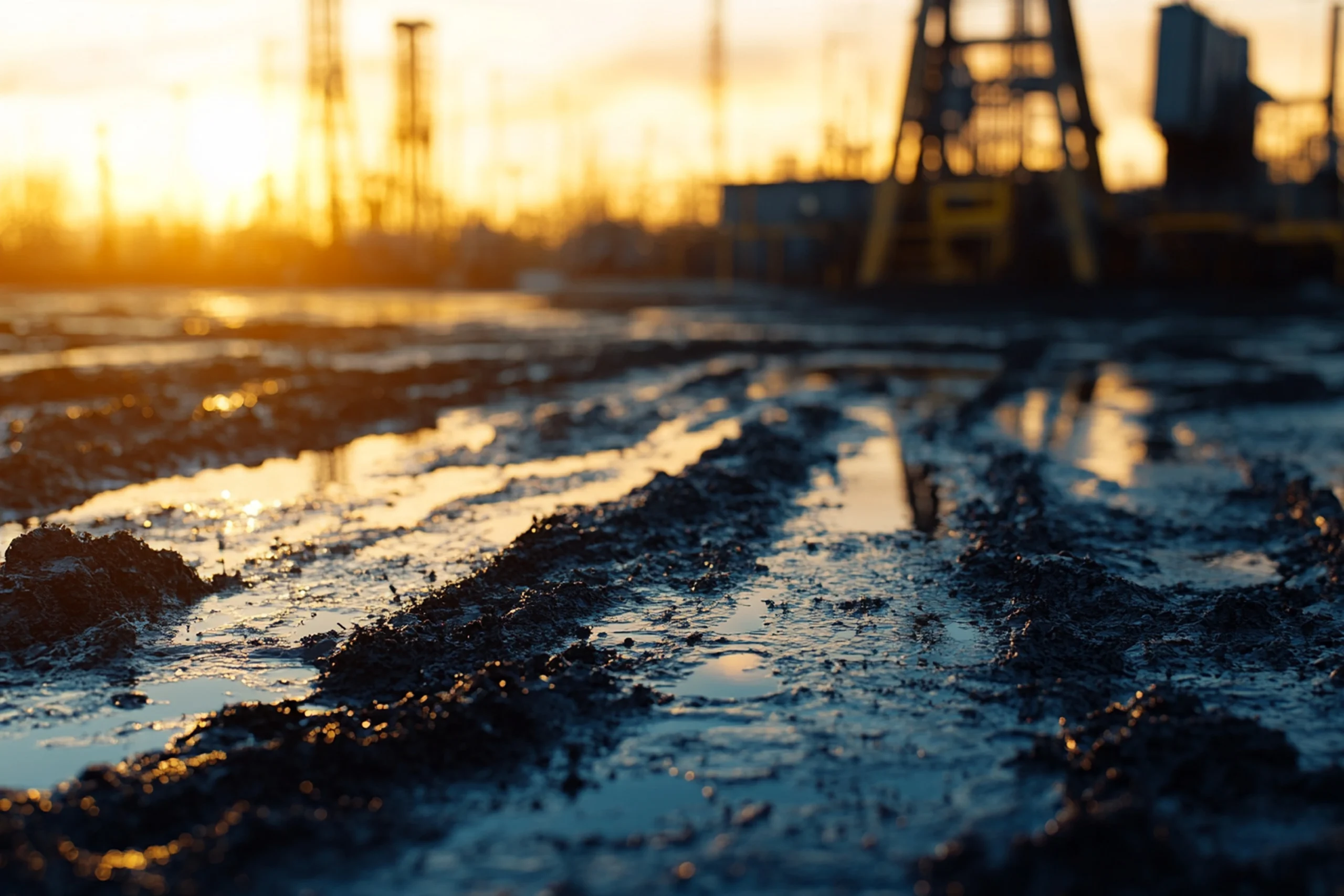What are Surface Rights?

When most people think about land ownership, they picture the freedom to build a home, grow crops, or simply enjoy the natural beauty of their property. On the surface, owning land seems straightforward—what you see is what you own, right? But the reality can be much more complex, especially in regions rich in natural resources like oil, gas, and minerals.
What many landowners don’t realize is that the rights to the surface and the rights to the subsurface can be completely separate. You might hold the deed to a property and control everything on top—the house, trees, or fields—but the valuable resources beneath your land could belong to someone else entirely. This division of rights can create a unique set of challenges, particularly when energy companies come into play, eager to tap into the resources hidden underground.
For those who are new to property ownership or are considering a land purchase in energy-rich areas, understanding the difference between surface rights and mineral rights is essential. Without this knowledge, you could find yourself facing unexpected disruptions when a company seeks access to the minerals beneath your land. Whether you’re building a dream home or operating a farm, knowing what surface rights mean—and how they can affect your land’s use and value—is key to protecting your investment.

Why Surface Rights Matter?
Owning land comes with certain privileges and responsibilities, and surface rights are a critical part of that equation. Simply put, surface rights give you control over what happens on the land’s surface, including the ability to build, farm, or harvest natural resources like timber or water. You can use the land to construct a home, plant crops, or create other developments that align with your needs and lifestyle.
But owning the surface is only part of the story. While you may have full authority over everything above ground, the soil beneath could hold valuable resources—oil, gas, minerals—that you don’t necessarily own. This is where the concept of mineral rights comes into play, and things can quickly get complicated.
In regions where energy resources are abundant, it’s not uncommon for land ownership to be split into two distinct parts: surface rights and mineral rights. While you control what happens above ground, someone else might own the right to extract the valuable resources hidden below. This creates a situation where, despite owning the surface, you may have little control over whether or how those underground resources are accessed.
For example, imagine you’ve built a home or are farming a piece of land, and an energy company expresses interest in drilling for oil or gas beneath your property. As a surface rights holder, you might wonder, “Do I have any say in this?” The answer often depends on whether you also own the mineral rights or if they’ve been sold to another party. If you don’t own them, your ability to prevent or limit subsurface activity can be limited, leading to potential disruptions in how you use your land.
This split ownership structure is particularly common in states with rich energy reserves, such as Texas, North Dakota, and Wyoming, where mineral rights have long been a prized asset. Understanding how surface rights interact with mineral rights is essential for any landowner, as it directly impacts the way your property can be used, especially when energy companies are involved.
The Surface vs. Mineral Rights Dilemma
In the U.S., property ownership isn’t always as simple as owning the land you stand on. One of the most significant complexities arises from the fact that surface rights and mineral rights can be separated. This separation means that owning the surface of a property doesn’t necessarily grant you ownership of the valuable resources beneath it—such as oil, gas, coal, or other minerals.
When you purchase land, it’s crucial to understand whether you own both surface and mineral rights. If you only hold surface rights, your control is limited to what happens on top of the land—things like building, farming, or recreation. However, if someone else owns the mineral rights, they hold a separate and often dominant claim to the subsurface resources. The mineral rights owner has the legal authority to access and extract these underground resources, and they can do so even if it interferes with your surface activities.
This separation can lead to uncomfortable situations for surface rights holders. Imagine owning a picturesque piece of land, where you’ve invested time and resources into building a home, farming crops, or cultivating the landscape. One day, an oil or gas company contacts you, informing you of their intention to start drilling under your property. Because you don’t own the mineral rights, you might have little say in the matter. The company could place equipment on your land, dig wells, build roads, and disrupt your daily activities—all with minimal input from you.
In states with significant oil and gas reserves, like Texas, Oklahoma, and North Dakota, this division of rights is particularly common. The legal framework in these regions often gives mineral rights holders the upper hand, based on the concept that mineral rights take precedence over surface rights. This “dominance of the mineral estate” allows the mineral rights owner to access the resources below the surface, even if it causes inconvenience or disruption to the surface rights holder.
While mineral rights owners do have obligations to limit damage to the surface where possible, the reality is that surface rights holders may find themselves with limited power to prevent or control extraction activities on their property. This situation highlights the importance of understanding the relationship between surface and mineral rights when purchasing land, especially in areas where energy development is prevalent.

Common Challenges for Surface Owners
When the mineral rights beneath your land are owned by someone else, you may face various disruptions from extraction activities. While mineral extraction is often vital for energy production, it can have significant impacts on surface rights owners. Here are some of the most common challenges surface owners face when mineral rights owners decide to extract resources:
Drilling Rigs and Equipment: One of the most visible signs of resource extraction is the arrival of heavy machinery. Companies may need to install large drilling rigs, storage tanks, containment ponds, and other equipment to access underground resources. This infrastructure can take up significant space and alter the landscape, potentially making parts of your property unusable for its original purpose, whether it’s residential, agricultural, or recreational.
Road Construction: To facilitate access to drilling sites, energy companies may need to build new roads across your property. This can change the natural flow of the land, interfere with farming or livestock operations, and reduce the aesthetic appeal of your property. In some cases, these roads are permanent, leading to long-term impacts on land usability and value.
Environmental Concerns: Perhaps the most worrying challenge for surface owners is the potential environmental impact of drilling or extraction. Subsurface activities can sometimes lead to water contamination, soil degradation, or even air pollution. Groundwater, in particular, may be at risk from drilling operations, and any contamination could have long-lasting effects on the ecosystem and the health of those who rely on the land for water or food production. Furthermore, restoring the land after extraction can be a slow process, sometimes leaving scars on the landscape that take years to heal.
How to Protect Your Property
Even if you don’t own the mineral rights to your land, you aren’t entirely powerless when it comes to protecting your surface estate. There are several legal and practical steps you can take to safeguard your property from excessive disruption and damage. Here are some key measures you can implement:
Negotiate Surface Use Agreements: One of the most effective ways to protect your land is to negotiate a Surface Use Agreement (SUA) with the mineral rights owner or the extraction company. This legally binding contract outlines the terms and conditions under which the company can access and use your property. For example, you can specify where equipment and roads can be placed, limit the amount of land they can disturb, and ensure they restore the surface to its original condition after their operations. Having a well-structured SUA in place can prevent unnecessary disruptions and provide peace of mind.
Compensation for Surface Damage: If extraction activities result in damage to your land, structures, crops, or other resources, you are entitled to compensation. It’s important to clearly outline compensation terms in your agreements before any work begins. This could include payment for lost income from farming, damages to buildings, reduced land value, or the costs of restoring the landscape. Make sure to work with legal professionals to ensure your compensation terms are fair and legally enforceable.
Environmental Safeguards: Environmental protection is a critical concern, especially when drilling or extraction could affect water sources or soil quality. As part of your Surface Use Agreement, include environmental safeguards that require the company to take steps to prevent contamination and pollution. These clauses might require water testing before and after drilling operations, as well as soil restoration efforts. You can also stipulate that companies must adhere to environmental standards set by local or federal regulations. Ensuring these safeguards are in place will help protect your property’s long-term viability and natural resources.
Can Surface Owners Stop Extraction Activities?
Surface owners often wonder if they can prevent companies from drilling or extracting minerals on their land. In most cases, the answer is no—mineral rights take precedence over surface rights, meaning the mineral rights holder has the legal authority to access subsurface resources, even if it disrupts surface use.
However, surface owners can negotiate terms to limit the impact of these activities. You can set conditions on where equipment is placed, request compensation for damages, and include environmental protections in agreements. Additionally, local zoning laws or regulations may provide some protection, limiting how and where extraction can occur.
While you may not be able to stop extraction entirely, these strategies can help mitigate the effects on your property.
Understanding the distinction between surface rights and mineral rights is essential for any landowner, particularly in regions where energy development is prevalent. While surface rights grant control over the visible land, subsurface ownership often holds more power, allowing mineral rights holders to access underground resources with limited interference. This can lead to disruptions in how the surface is used, impacting land value, usability, and the environment.
However, surface owners are not entirely without options. By negotiating surface use agreements, seeking compensation for damages, and including environmental safeguards in contracts, landowners can protect their property from excessive disruption. Staying informed about local laws and understanding your rights will help you maintain control and safeguard the integrity of your land, even when subsurface resources are at stake.